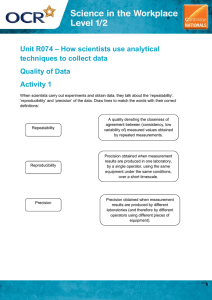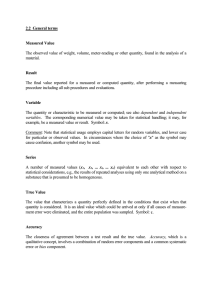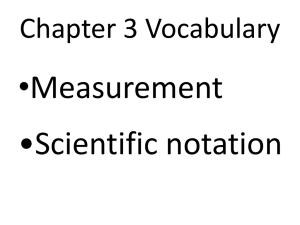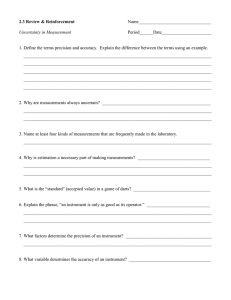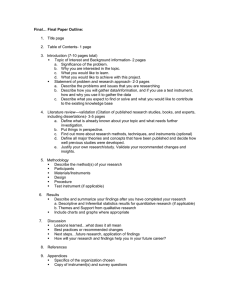Technical Note 10 Accuracy, Precision
advertisement
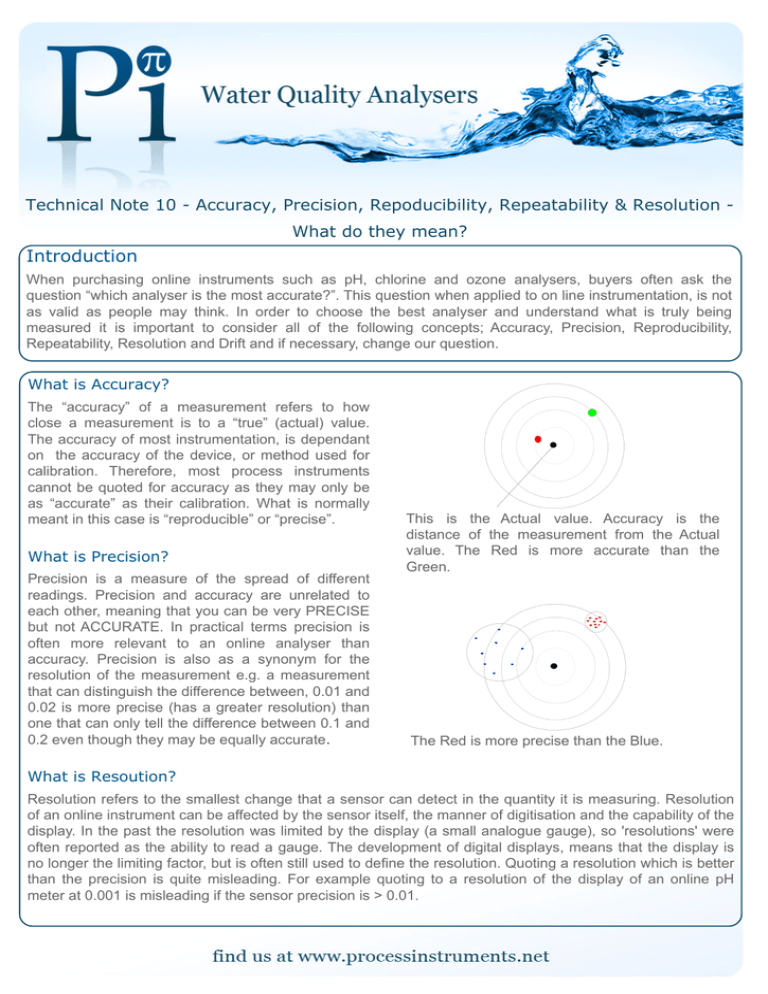
Technical Note 10 ­ Accuracy, Precision, Repoducibility, Repeatability & Resolution ­ Introduction What do they mean? When purchasing online instruments such as pH, chlorine and ozone analysers, buyers often ask the question “which analyser is the most accurate?”. This question when applied to on line instrumentation, is not as valid as people may think. In order to choose the best analyser and understand what is truly being measured it is important to consider all of the following concepts; Accuracy, Precision, Reproducibility, Repeatability, Resolution and Drift and if necessary, change our question. What is Accuracy? The “accuracy” of a measurement refers to how close a measurement is to a “true” (actual) value. The accuracy of most instrumentation, is dependant on the accuracy of the device, or method used for calibration. Therefore, most process instruments cannot be quoted for accuracy as they may only be as “accurate” as their calibration. What is normally meant in this case is “reproducible” or “precise”. What is Precision? Precision is a measure of the spread of different readings. Precision and accuracy are unrelated to each other, meaning that you can be very PRECISE but not ACCURATE. In practical terms precision is often more relevant to an online analyser than accuracy. Precision is also as a synonym for the resolution of the measurement e.g. a measurement that can distinguish the difference between, 0.01 and 0.02 is more precise (has a greater resolution) than one that can only tell the difference between 0.1 and 0.2 even though they may be equally accurate. This is the Actual value. Accuracy is the distance of the measurement from the Actual value. The Red is more accurate than the Green. The Red is more precise than the Blue. What is Resoution? Resolution refers to the smallest change that a sensor can detect in the quantity it is measuring. Resolution of an online instrument can be affected by the sensor itself, the manner of digitisation and the capability of the display. In the past the resolution was limited by the display (a small analogue gauge), so 'resolutions' were often reported as the ability to read a gauge. The development of digital displays, means that the display is no longer the limiting factor, but is often still used to define the resolution. Quoting a resolution which is better than the precision is quite misleading. For example quoting to a resolution of the display of an online pH meter at 0.001 is misleading if the sensor precision is > 0.01. What is Drift? Drift is possibly the most important and overlooked term relevant to online process instruments. Drift defines how much the signal would change over a given time­scale e.g. 1% per month. It is important to understand what the percentage refers to, for example, does it refer to the current reading or the full scale? In the majority of cases it typically refers to the full scale. What is Repeatability/ Reproducibility? Reproducibility is the degree to which an experiment or study can be accurately reproduced, or replicated, by someone else working independently, and is one of the main principles of the scientific method. For the vast majority of people/situations reproducibility equals repeatability. The extent to which reproducibility applies to an instrument is dependant on whether it is a continuous or continual online instrument. With a continual online instrument a series of samples are analysed repeatedly, therefore reproducibility applies between each sample. For continuous online instruments the sample is analysed constantly, therefore reproducibility does not apply. Conclusions For on line instruments like pH, chlorine, ozone, chlorine dioxide etc.: Resolution: is a useful measure if it is a true figure, but typically it is the resolution of the display that is quoted and so is worthless. Accuracy: is set by the calibration method and so depends on the accuracy of the device used to calibrate the sensor. No manufacturer should quote accuracy for an online analyser that needs to be calibrated. Repeatability and Reproducibility: have no real relevance to online instruments. Drift: gradual change of the signal from a measuring instrument over time or resolution (if real). Quoting for accuracy, repeatability and reproducibility are not useful for online instruments. When choosing an instrument, drift is what really counts, which is often overlooked completely, or in some cases precsion (be careful it isn't the resolution of the display that you are buying!).
